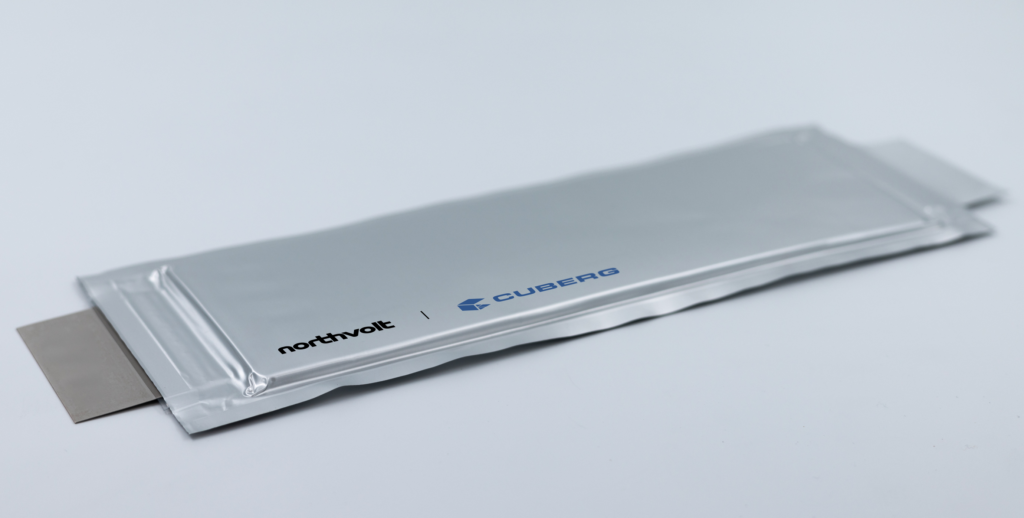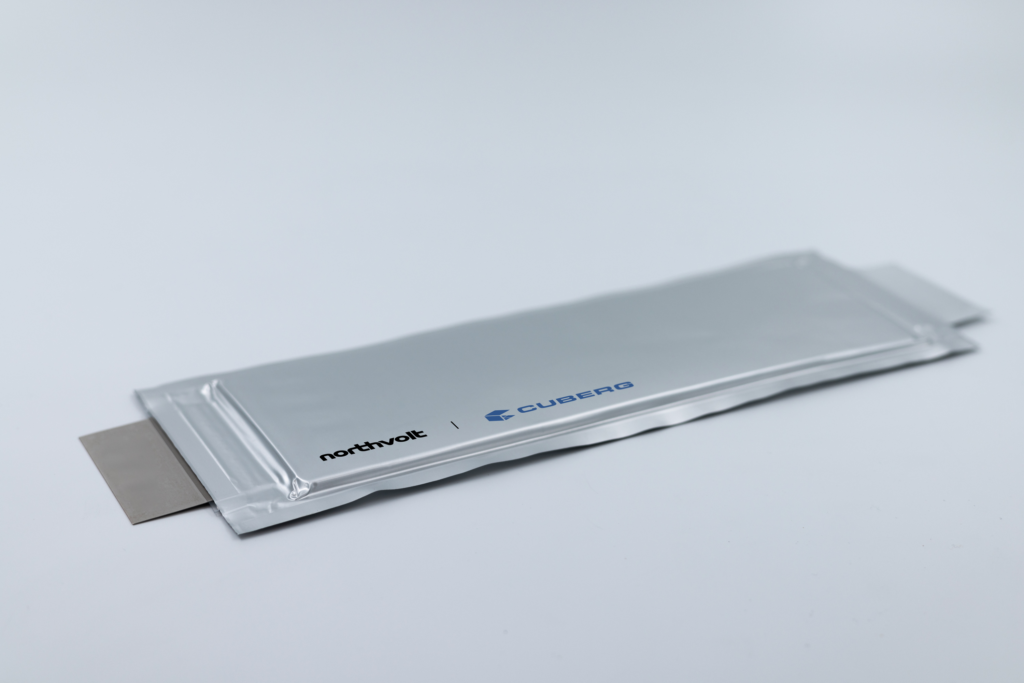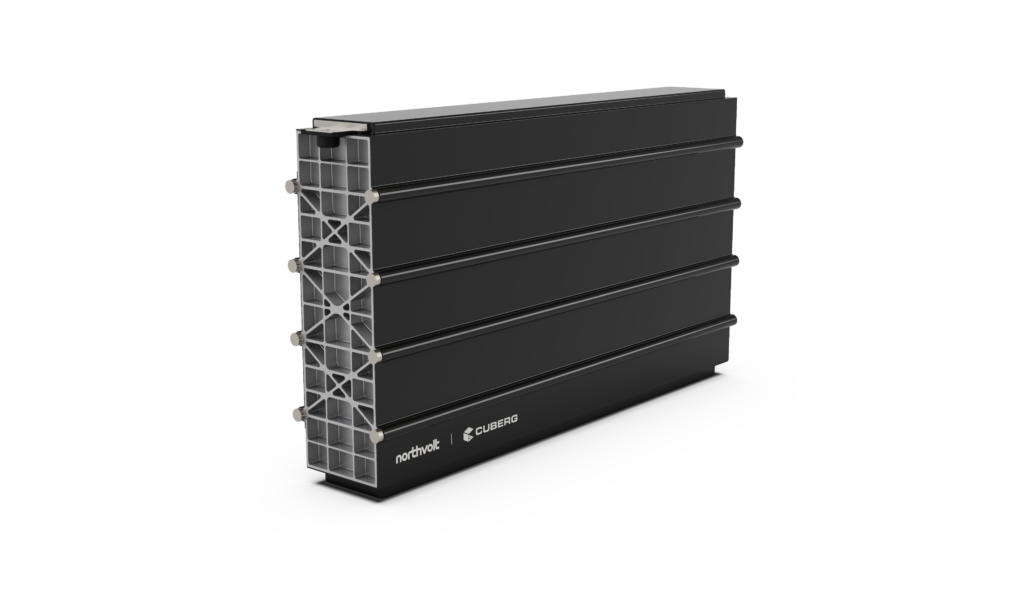Batteries for Electric Aviation: A Q&A With the CEO of Cuberg


Northvolt’s subsidiary, Cuberg, is leading a new program for the development of batteries that will power electric aircraft. (Photos: Northvolt/Cuberg)
Cuberg, a subsidiary of Northvolt, is spearheading a new program to develop high-performance batteries for electric aircraft. Cuberg’s team has worked on developing battery technology for the aviation industry since it was founded in 2015. Historically, the company’s focus has been on innovations related to core battery cell chemistry. Now, they are moving beyond the battery cells, or “building blocks,” to become a provider of full battery systems.
Richard Wang, CEO and founder of Cuberg, explained that this means “the entire engineered energy storage system which is a critical piece of certification and, ultimately, is a turnkey solution that any aircraft OEM can integrate into their platforms.”

Richard Wang, CEO of Cuberg
When Northvolt acquired Cuberg, the startup included about 25 employees. “Northvolt has really bought into the vision of developing advanced batteries for aviation,” Wang shared with Avionics. “Given their strong support, we’ve now grown to about 150 people. By the end of this year, [we will] probably grow to almost 250 people. I see Cuberg (and Northvolt) becoming the single most sophisticated and well-resourced battery development organization for aviation.”
He noted that Cuberg is now able to leverage some substantial investments from Northvolt. “They’re investing in this because this is also their future technology roadmap—to deploy to much higher-volume automotive markets. When aviation companies talk about how to leverage the investments and technology of the automotive world to benefit electric aviation and battery technology, I think this is probably one of the most direct manifestations of how leveraging automotive momentum, resources, and capabilities can enable electric aviation to go much, much faster.”
Richard Wang shared his perspective on the company’s new battery development program—as well as the electric aviation industry in general—in a recent interview with Avionics International. Check out our question-and-answer session with Cuberg’s CEO below.
Avionics: Could you explain the significance of the shift from focusing on battery cells to providing full battery packs?
Richard Wang: What we’re seeing is that this kind of turnkey solution, the full system delivery, has been quite attractive for customers to effectively integrate our technology without having to go through the pain of engineering their own battery systems.
It also showcases that our innovation is becoming more and more concrete and practical in terms of commercial deployment, because we have solved a lot of the complexities around integrating the cells into full systems. Even at the system level, we have developed a battery that has 40% more energy per weight than the best lithium-ion systems for aviation right now. That translates into roughly a doubling, or even more, in effective flying range. That really showcases that we are able to deliver this complete solution that enhances aircraft performance in electric aviation.

Cuberg’s aviation module
What challenges or obstacles have come up in the transition?
We decided to move beyond battery cells and into systems [because] many next-generation battery chemistries pose new and different kinds of challenges for system integration—things that are not so familiar to existing lithium-ion battery developers. A few examples of this:
- Our battery cells, lithium metal cells, are known to require a little bit more pressure on the face compared to lithium-ion cells. So the mechanical design of our system has to evolve to apply a little extra pressure for optimal cyclability.
- How you charge and discharge lithium metal cells and how you manage their operations from an electrical perspective is different. Lithium metal cells need more specialized types of charging and management to extract the best lifetime and reliability. We’ve also developed a battery management system from an electrical perspective to optimize performance.
- The FAA’s DO-311 [Minimum Operational Performance Standards for Rechargeable Lithium Battery Systems] requires that you drive battery cells into thermal runaway and show that you’re able to contain that thermal runaway at the cell or at the module level without it further spreading to the rest of the battery system. How thermal runaway occurs with next-gen chemistries is qualitatively different. You need different kinds of materials and different mechanical and thermal designs to facilitate that certifiable design. We have a number of innovations—from a materials and mechanical design perspective—to ensure you can also handle the cell safely from a runaway perspective.
What is your perspective on the current state of electric aviation as it relates to battery advancements?
What we see is a lot of companies that are racing to get through flight demonstration campaigns and through to certifiable first-generation aircraft. Quite consistently across the industry, both for VTOL and CTOL players, the performance range or the practical flying range that they can achieve when the aircraft is fully loaded, with a certifiable aircraft and battery design, and considering reserve requirements from the FAA, the actual usable flying range drops very, very dramatically. Most VTOL [vertical take-off and landing] players are talking about effective flight ranges of well under 50 miles. A lot of other numbers that are being published cannot be achieved with current-gen battery technologies.
Even if you look in the CTOL [conventional take-off and landing] space, for some of the most optimized aircraft platforms, people are probably topping out at around 150 miles. Again, when you’re talking about realistic systems fully loaded with consideration for flight reserves and so forth, what we see is that the flight range with lithium-ion batteries is simply insufficient to really capture significant portions of the market as companies have envisioned for electric aviation.
There is a pathway to market, and companies are pursuing lithium-ion batteries currently, but the markets that they can serve are going to be quite restricted with lithium-ion batteries.
Ultimately, why it’s so critical to have a real breakthrough in battery energy per weight is that it opens up a more useful and effective flying range—you’re getting upwards of 150 miles for VTOL companies, as they originally envisioned, and CTOL players that can fly maybe 300+ miles.
We also see that the sophistication and level of capability around the batteries and battery companies serving aviation is still at a fairly early and immature level. You have a few small startups trying to develop aviation-grade battery systems using standard off-the-shelf lithium-ion cells, and there are a few OEMs trying to develop their own batteries. But when you look at the broader picture of battery technology and sophistication, it goes beyond just “Can you fly?” and even “Can you certify?” to “Do you have a full end-to-end life cycle management of that battery through to end-of-life, recycling, disposal, or second-life applications?”
We’re seeing a need for the broader battery industry to really lean into aviation to help support some of these bigger-picture solutions. A lot of this has been developed in the automotive world to a much higher level of sophistication at this point. The opportunity we see as part of Northvolt, a very large automotive battery manufacturer, is leveraging all of their capabilities that have been vertically integrated and deploying these things for aviation, where having this end-to-end solution solves a quite critical challenge for a lot of OEMs and operators.

Battery manufacturing at Cuberg
How do you see Cuberg’s strategy and priorities evolving in the next five or ten years?
Short-term, we have signed some major development agreements with aircraft manufacturers to deliver full battery packs and systems for ground testing this year and for first flight testing, in both VTOL and CTOL platforms, later next year—that’s our first big step. Based on that, we will then work with more companies that are coming into our pipeline to develop batteries for proper certification programs and work with them for a fully certifiable design. This is in the coming three years.
We anticipate the first certified aircraft using our lithium metal batteries either in late 2026 or perhaps 2027, given how long these certification timelines typically take. 2027 through 2030 is really when we are looking at substantially ramping up our manufacturing capabilities beyond that first wave of certified aircraft towards being able to deliver batteries for many thousands or tens of thousands of aircraft per year, and also to diversify. In addition to supplying manned aviation with CTOL and VTOL, we’ll also be looking at the very exciting heavy cargo drone industry that has significant need for battery innovations, and a few other adjacent segments that are ultimately driven by battery performance.
The post Batteries for Electric Aviation: A Q&A With the CEO of Cuberg appeared first on Avionics International.
—————
Boost Internet Speed–
Free Business Hosting–
Free Email Account–
Dropcatch–
Free Secure Email–
Secure Email–
Cheap VOIP Calls–
Free Hosting–
Boost Inflight Wifi–
Premium Domains–
Free Domains





